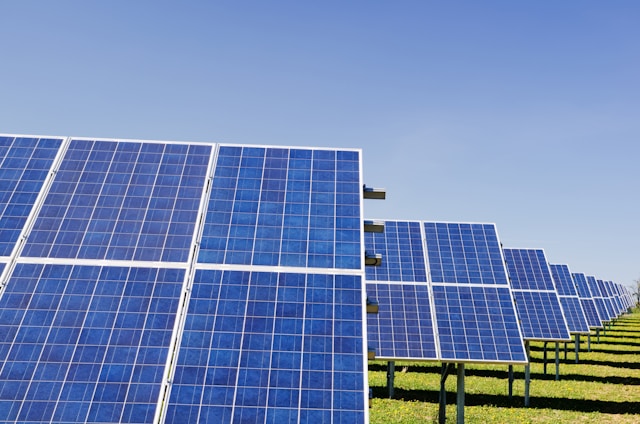Government policies and incentives play a crucial role in accelerating the adoption of renewable energy in urban areas. Policies such as tax credits, subsidies, and renewable energy mandates encourage both individuals and businesses to invest in solar and wind power.
“Supportive government policies are essential for the widespread adoption of renewable energy technologies,” states policy advisor Julia Martinez.
The Renewable Energy Certificates (REC) program, for example, allows entities to purchase certificates representing renewable energy generation, providing financial incentives for green energy projects. Additionally, many cities are setting ambitious renewable energy targets, committing to sourcing a significant portion of their energy from renewables within the next few decades.
The Economic Impact of Renewable Energy
The economic benefits of transitioning to renewable energy extend beyond environmental considerations. Investments in solar and wind power create jobs across various sectors, including manufacturing, installation, maintenance, and research and development.
“The renewable energy sector is a significant driver of job creation and economic growth,” says economist Dr. Rachel Lewis.
The growth of this sector can stimulate local economies by attracting new businesses and fostering innovation. Furthermore, as renewable energy technologies become more cost-effective, they can lead to reduced energy costs for consumers and businesses, enhancing economic competitiveness.
Educational Initiatives and Public Awareness
Education and public awareness campaigns are vital for promoting renewable energy adoption. Schools, universities, and community organizations are increasingly incorporating renewable energy topics into their curricula and programs, educating the next generation about the importance of sustainable energy practices.
“Educational initiatives help build a knowledgeable and proactive citizenry that supports renewable energy efforts,” explains educator Dr. Anil Sharma.
Public awareness campaigns, often spearheaded by government bodies and non-profit organizations, aim to inform the public about the benefits of renewable energy and how individuals can contribute to a more sustainable future. These campaigns utilize various media channels to reach diverse audiences, fostering a culture of sustainability.
Technological Integration and Smart Cities
The integration of renewable energy with other advanced technologies is paving the way for the development of smart cities. Smart cities leverage data and technology to optimize energy use, enhance efficiency, and improve the quality of urban life.
“Smart cities represent the future of urban living, where technology and sustainability converge to create more livable environments,” says urban technology expert Dr. Priya Desai.
In smart cities, renewable energy systems are integrated with Internet of Things (IoT) devices, smart grids, and energy management systems. These integrations enable real-time monitoring and control of energy production and consumption, ensuring efficient use of resources and reducing waste.
Community Involvement and Grassroots Movements
Community involvement is critical to the success of renewable energy projects. Grassroots movements and local organizations often drive renewable energy initiatives, advocating for clean energy solutions and mobilizing community support.
“Community-driven renewable energy projects empower local residents to take charge of their energy futures,” notes community organizer Rahul Verma.
These movements can lead to the development of community solar projects, where multiple households invest in a shared solar energy system. Such projects democratize access to renewable energy, making it affordable and accessible to a broader range of people.
Overcoming Barriers to Adoption
Despite the numerous benefits, several barriers hinder the widespread adoption of renewable energy in urban areas. These include high initial costs, technical challenges, and regulatory hurdles. Overcoming these barriers requires a multi-faceted approach involving technological innovation, supportive policies, and financial mechanisms.
“Addressing the barriers to renewable energy adoption is crucial for achieving a sustainable energy future,” says energy strategist Dr. Vikram Singh.
Technological advancements that reduce the cost of renewable energy systems and improve their efficiency are essential. Financial mechanisms such as green bonds and public-private partnerships can provide the necessary funding for large-scale renewable energy projects. Additionally, regulatory reforms that streamline permitting processes and incentivize renewable energy investments are needed to facilitate adoption.
The Global Perspective
The transition to renewable energy is a global phenomenon, with cities around the world adopting solar and wind power to meet their energy needs. International collaborations and knowledge-sharing platforms play a significant role in accelerating this transition by disseminating best practices and innovative solutions.
“Global cooperation and knowledge-sharing are key to advancing renewable energy technologies and overcoming common challenges,” states international energy consultant Maria Hernandez.
Countries with advanced renewable energy infrastructure, such as Germany and Denmark, often serve as models for other nations. By learning from these examples, cities worldwide can develop effective strategies for integrating renewable energy into their urban landscapes.
Future Trends and Innovations
The future of renewable energy in urban landscapes is bright, with several emerging trends and innovations set to transform the sector. These include the development of floating solar farms, offshore wind projects, and advanced energy storage solutions.
“Emerging trends and innovations in renewable energy hold the potential to revolutionize urban energy systems,” says renewable energy researcher Dr. Emily Wong.
Floating solar farms, which are installed on bodies of water, offer a solution to land constraints in densely populated urban areas. Offshore wind projects harness the stronger and more consistent winds over oceans, providing a reliable source of renewable energy. Advanced energy storage solutions, such as next-generation batteries and pumped hydro storage, ensure the stability and reliability of renewable energy systems.
Conclusion
The adoption of solar and wind power is fundamentally transforming urban landscapes, creating more sustainable, resilient, and livable cities. By leveraging technological advancements, supportive policies, and community involvement, cities can effectively integrate renewable energy into their infrastructure.
“The future of urban energy lies in harnessing the power of the sun and wind, creating a cleaner and more sustainable world for all,” concludes environmental advocate Priya Sinha. As we move towards this future, it is essential to continue innovating, collaborating, and advocating for renewable energy solutions that benefit both people and the planet.



